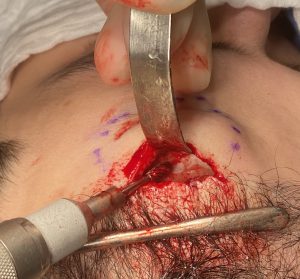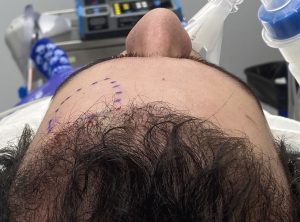The forehead is usually thought of as having a broad flat surface but in reality its topography is a bit more complex. Its shape varies amongst men and women but the one feature that is consistent is the projection of the upper forehead should not exceed that of the lower half of the forehead. Such excessive upper forehead projections come in a variety of presentations of which bossing and horns are the most common. While there are limits as to how much upper forehead bone can be safely reduced almost always some improvement is possible.
Like all skull reductions, and the forehead is no exception, bone reduction its done by high speed burring of the outer cortex or cortical table. Thus the pertinent questions are how much reduction is possible and where is the incision placed that is needed to do it. A 2D CT scan can answer the first question but the hairline and other anatomic factors provides the answer to the latter.
For skull reduction it is important to realize that it is a linear instrument and its lengths are limited. Thus incisional access can never be too far from the site of reduction and there is no remote endoscopic or laparoscopic method for bone burring to do it. As a result incisions must be either at or just behind the frontal hairline. (if one is present)



Having used this small frontal hairline incision hundreds to times I have yet to see any appreciable scarring from it.
Dr. Barry Eppley
World-Renowned Plastic Surgeon




